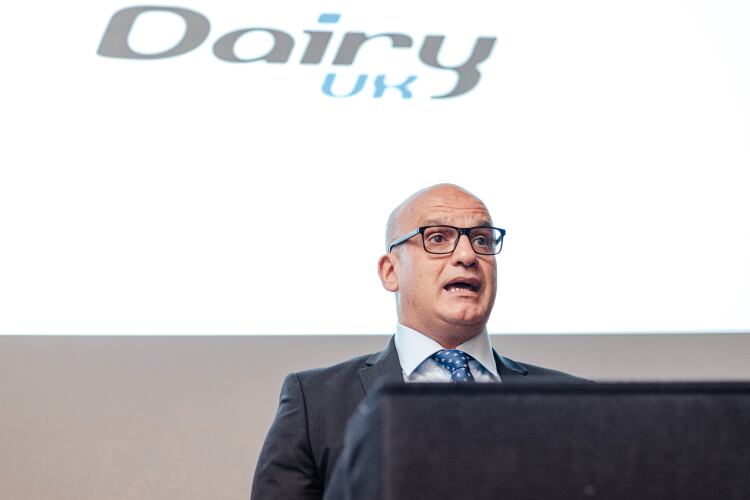The UK Dairy Roadmap is a cross-industry body designed to bring together stakeholders from the entire UK dairy supply chain in order to devise targets and bolster the sector’s sustainability credentials. Getting UK dairy farmers to undertake carbon footprinting has been one of the main ambitions of the organization, which seeks to set out data-driven farm-level indicators and targets and improve transparency.
In October 2022, Dairy UK chairman and Arla Foods UK MD Ash Amirahmadi told this publication that ‘there is a clear link between carbon footprint and production efficiency’. But variations in the data generated by different carbon calculating tools has been a factor in discouraging farmers from undertaking benchmarking.
This is why the body’s Carbon Footprint Working Group has been collaborating with providers to develop standard methods for calculating emissions. Farm Carbon Toolkit, Alltech E-CO2, Trinity AgTech, Intellync, Agrecalc, Cool Farm Tool, Promar and Map of Ag have all contributed to the initiative.
The working group, which has reviewed the current carbon calculators available to farmers, also plans to investigate the calculation of carbon sequestration and its value to the sector.
“We are working with all the tools currently used by the UK dairy sector (eight providers),” a Dairy UK spokesperson told us. “The tool providers are engaging very positively with the working group and there is a clear benefit to everyone involved. Collaborating in a pre-competitive space, with industry involvement and knowledge sharing through the UK Dairy Roadmap, we are engaging the whole sector in this process.”
Asked what aspects of reporting the group is looking to standardize, the spokesperson said: “One of the main differences between the tools is in the way they collect animal inventory data. For example, youngstock are split into 12-monthly, 6-monthly or 3-monthly age ranges. The working group is looking to improve automated data collection, so that this is standardized across the industry.”
“These differences mean that data is currently useful for comparing year-on-year progress within a farm when the same tool and methodology for data collection is used, but data from different tools cannot currently be combined to generate a meaningful industry average or provide benchmarking. This is one of the main issues the working group is looking to rectify.”
There is also a difference in the level of support provided to farmers when allocating resources between enterprises, so the working group has teamed up with the tool providers to generate consistent support for farmers using methodology developed by the International Dairy Federation.
Standardized reporting templates
In addition to collaborating with the carbon footprinting sector to remove sources of variation, such as differences in animal inventory calculations and emissions factors, the working group has agreed with providers to share key metrics in the form of standardized reporting templates.
“The working group has agreed with tool providers to generate a standard table at the start of their reports to share important metrics for the industry, which includes emissions intensity for milk and a breakdown of where the emissions are occurring on the farm,” the spokesperson said. “These standardised reporting templates will make it easier to pass relevant information through supply chains and combine results from different tool providers to give an overall picture.”
Following on from this initiative, Dairy UK aims to be able to generate a UK-wide carbon footprint estimate in the summer.
Beyond standardizing reporting parameters to improve confidence in the data that farmers can generate, the working group says it has ‘no intention of limiting the choice of tool to use or mandating a set level of support provided to farmers after generating a carbon footprint’.
David Cotton, chair of the working group, commented: “Whilst many dairy farmers are pressing ahead with carbon footprinting on farm, others have been reluctant to do so, due to the inconsistency of the final reports. We want to change that so that we can trust the data and set ambitious targets for the Dairy Roadmap. All the work so far shows that farms with a low footprint are generally more profitable; having good information and benchmarking across the sector will help in further driving down carbon use and improve profitability in farming".



